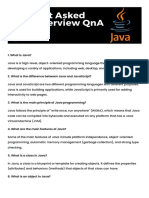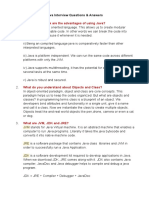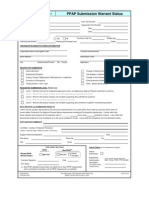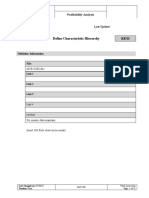0% found this document useful (0 votes)
4 views3 pagesJava Basis 25 Question
Java is a high-level, object-oriented programming language that runs on the Java Virtual Machine (JVM), ensuring platform independence. Key components include the Java Development Kit (JDK) for development and the Java Runtime Environment (JRE) for running applications. Java features include object-oriented principles, encapsulation, inheritance, polymorphism, and exception handling.
Uploaded by
rajmayank1121Copyright
© © All Rights Reserved
We take content rights seriously. If you suspect this is your content, claim it here.
Available Formats
Download as TXT, PDF, TXT or read online on Scribd
0% found this document useful (0 votes)
4 views3 pagesJava Basis 25 Question
Java is a high-level, object-oriented programming language that runs on the Java Virtual Machine (JVM), ensuring platform independence. Key components include the Java Development Kit (JDK) for development and the Java Runtime Environment (JRE) for running applications. Java features include object-oriented principles, encapsulation, inheritance, polymorphism, and exception handling.
Uploaded by
rajmayank1121Copyright
© © All Rights Reserved
We take content rights seriously. If you suspect this is your content, claim it here.
Available Formats
Download as TXT, PDF, TXT or read online on Scribd
/ 3






















































































